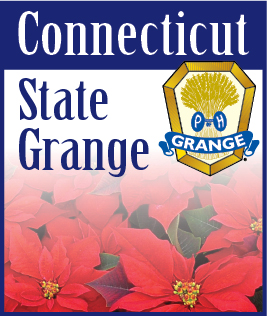| MARCH 26, 2013 -- In her 1996 autobiography “An Eye for Winners,” the catalog pioneer Lillian Vernon credited Benjamin Franklin with introducing the “American institution” of mail-order retailing.
Undeniably, Franklin is responsible for many innovations (the first successful circulating library, bifocals and the lightning rod, to name a few). But mail order?
In 1744, Franklin published “A Catalogue of Choice and Valuable Books, Consisting of Near 600 Volumes, in most Faculties and Sciences,” whose title page laid out the terms of sale for the titles he offered, which ranged from treatises on law and philosophy to works of poetry. His sale was to start at 9 a.m. sharp on April 11, and would last for three weeks “and no longer.” Terms were cash only. Notably, the printer, publisher and postmaster allowed people outside of town the opportunity to purchase the books, as well: “Those Persons that live remote, by sending their Orders and Money to said B. Franklin, may depend on the same Justice as if present.”
Franklin didn’t specify how, precisely, his remote customers were to receive their books, and according to James N. Green, an expert on Franklin and the librarian of the Library Company of Philadelphia -- the subscription library founded by Franklin -- there is no evidence of bound books being sent by post riders during this era, which would have qualified the shipments as “real” mail order. According to Green, “they probably would have been sent by whatever wagon was going that way, like other freight.”
Sending Seeds
It wasn’t until the 1830s that businesses commonly accepted and sent orders by mail and published catalogs so that customers could request exactly what they wanted.
Perhaps not surprisingly, the first enterprises to embrace mail order in the modern sense were seedsmen and nurserymen, whose customers were scattered across the U.S. and in its unsettled territories. Small and relatively non-perishable, seeds could be sent almost anywhere.
William Mann, a seller of seeds and forest trees, promised in an 1839 issue of the periodical the Yankee Farmer, “orders post paid, will be promptly attended to, and faithfully executed,” all the way from Bangor, Maine.
Western New York nurseryman B. Hodge had perfected his shipping methods by the time of his 1842 notice in the New Genesee Farmer guaranteeing that his trees and plants were “packed in superior order and shipped at Buffalo on board of any steamboat, vessel or canal boat required.” He added, “Catalogues gratis to every applicant.”
Descriptive catalogs, in fact, were as important to mail- order operations as reliable shipping. People in the plant business produced some of the earliest product catalogs, and theirs would also become among the most lavish, taking advantage of emerging techniques in chromolithography that rendered rich, full-color illustrations of flowers, fruits and vegetables.
By the 1840s, book publishers began embracing the mail- order concept, sending their printed catalogs to individual customers living remotely or, more often, to local sales agents who placed bulk orders for groups of people organized into clubs. Book agents could profit if they amassed enough orders, but they also had to absorb the onerous cost of postage themselves, prompting publishers to give them incentives such as free books and prizes if they met minimum quotas.
Within Reach
A series of postage-rate reductions from 1845 to 1851 further encouraged the mail-order business, and by the end of the Civil War any number of consumer goods were within easy reach of those living far away from active markets and dry-goods stores.
In a late 1865 issue of her Mirror of Fashions, Mme. Demorest promised to ship “any thing from a pin to a piano.” People could even remotely order ready-made clothing via the “country order system,” which provided them with detailed self- measurement systems so they could purchase clothes without visiting a tailor. The advent of standard clothing sizes, developed for soldiers’ uniforms during the Civil War, made ordering personal garments by mail even more reliable.
Baldwin the Clothier, of New York City, had by 1877 established an entire department dedicated to filling orders by mail, which came from all regions of the country: “Our sample rooms have been enlarged, and the work now requires the constant attention of a regular correspondent, and a number of careful men whose duties relate almost entirely to the filling of orders from near and remote places.” Baldwin even offered a money-back guarantee.
Although rarely acknowledged, these early businesses paved the way for the more successful and long-lived mail-order operations we are familiar with today. Aaron Montgomery Ward, who is credited with establishing the modern mail-order industry, began in 1872 and, ingeniously, established a relationship with the National Grange of the Order of Patrons of Husbandry (aka the Grange), supplying remote farm families across the country with all manner of goods. By 1884, Ward’s catalog was 240 pages, and by the early 1890s it offered some 24,000 items.
Richard Sears launched his company in 1886 and by the early 20th century boasted that it was “The Largest Supply House in the World.”
Further reforms in postal rates made mail order even more successful. The 1 cent advertising postcard was introduced in 1871, and in 1898 Americans enjoyed rural free delivery, which brought mail right to the doors of those living in the hinterlands. Rural parcel post arrived in 1913. By then, mail- order catalogs were as familiar in American living rooms as the goods within them.
Due to the rise of Internet commerce, along with higher printing, publishing and postage costs, many retailers are now forgoing printed catalogs. But even though e-commerce has changed the way we place orders, it still operates on the traditional mail-order model: We can order almost anything we want from almost anywhere in the world with the expectation that it will appear on our doorstep within days, often postage paid. |
